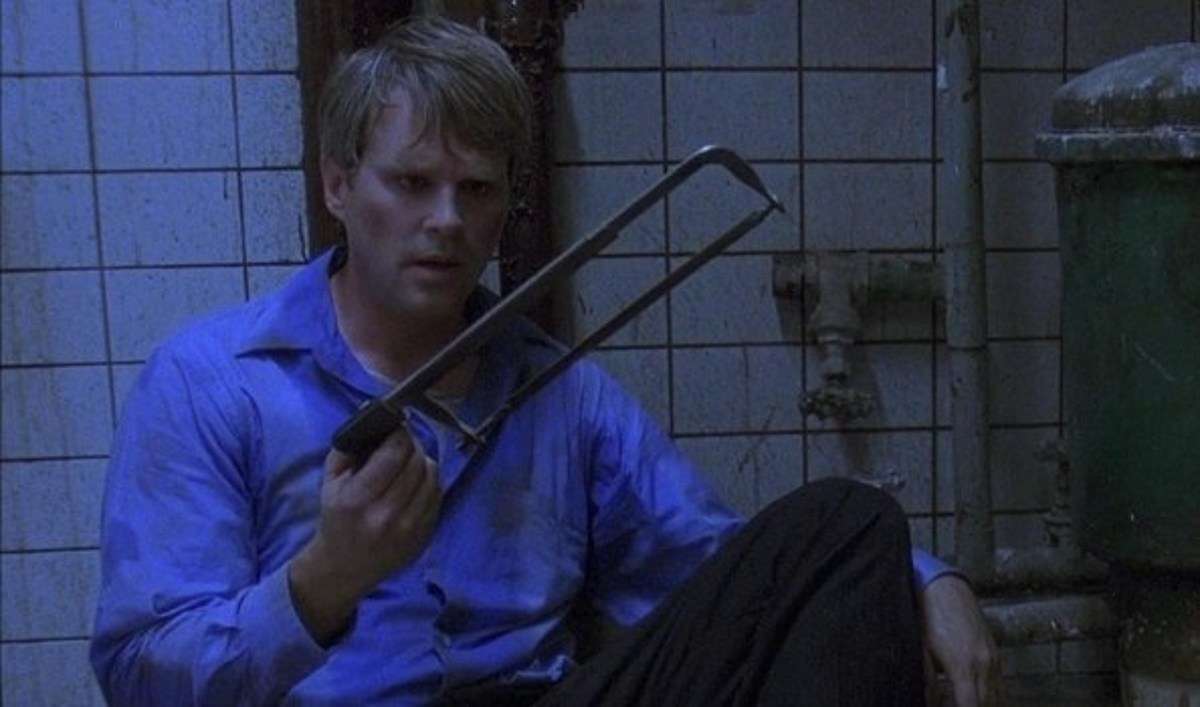Create a free profile to get unlimited access to exclusive videos, sweepstakes, and more!
This Week in Genre History: Saw wanted to play a game

Welcome to This Week in Genre History, where Tim Grierson and Will Leitch, the hosts of the Grierson & Leitch podcast, take turns looking back at the world’s greatest, craziest, most infamous genre movies on the week that they were first released.
The funny thing about horror franchises is that you almost never know they’re going to be franchises until they are. Friday the 13th went from being a micro-budget schlocky slasher flick about an old lady who kills teenagers into a 12-movie series over a 30-year span. And the idea that Saw would spawn nine films, back when it was released in 2004, would have been absurd — even to the people who made it. But there is something democratic about horror franchises: You can’t force one. They just have to come.
Thus, Saw, a weird little genre puzzle picture, ended up becoming a franchise that didn’t just have its own Halloween release every year, it ended up having multiple reboots, including an upcoming one, Spiral: From the Book of Saw, starring and co-written by Chris Rock. No one could have seen that coming, but it speaks not just to the success of the first film, but the time it was released. Movies are always a product of their time. Saw came out at the exact right time for Saw.
Today, we look back at Saw, released on Oct. 29, 2004, a small movie that became something larger, then smaller again... and now may just be revving right back up.
Why was it a big deal at the time? Saw was the brainchild of recent film school grads James Wan and Leigh Whannell, both of whom were explicit about what they were trying to do with it. “We didn’t have any money, so we tried to do The Blair Witch Project,” Wan has said. “I actually think the restrictions we had on our bank accounts at the time, the fact that we wanted to keep the film contained, helped us come up with the ideas in the film.”
That’s to say: The film had to take place in just one room. In fact, that was the idea for Saw, long before there was a Jigsaw or any sort of Rube Goldberg-esque torture devices. Two people are trapped in a room. How did they get there? How do they get out?
That led to a twist ending that, much more than any sort of torture porn idea, was the true selling point. (The twist ending was what inspired Tobin Bell to sign up to play the character who would become Jigsaw.) And it got the film not only sold but some legitimate arthouse indie attention: It played at the Sundance Film Festival, and closed the Toronto Film Festival. It received huge applause at each screening. They had a hit on their hands.
What was the impact? Some critics were lukewarm on Saw, praising its clever “two men locked in a room” plot construction but accusing it of having a mean streak and perhaps being a little bit too eager to embrace extreme violence for shock value. (This would become an even larger criticism with the sequels.) But audiences shone to it immediately. In a way, it was almost a mix between Se7en and The Usual Suspects, a gritty horror-thriller but one with a wild surprise ending that makes you recalculate and reevaluate everything that came before.
But what made it stick with audiences, in the long term, was the Jigsaw character, a serial killer who wasn’t a serial killer at all: He was just a doomed man who forced his victims, such as they were, to choose their own demises in a way that was denied to him. In the later films, some of these plot constructions were so overdone that they were too absurd and seemed to lose the point of what Jigsaw was trying to do in the first place. But in that first film, it was obvious that this plot would be replicable. So they’d of course keep doing that.
The final key to Saw’s success: Its Halloween release date. It would finish third its first weekend (behind even The Grudge), but in years after, it would essentially own the Halloween release date. When it was Halloween, you simply expected a Saw film.
Has it held up? The movie certainly has a higher class of actor than the later films would have: Danny Glover and Cary Elwes were much higher brow than some of the B-list filler actors of the later films. But you didn’t really need big actors after the first film: Those characters were just gruel for the slaughter. The first film is much more concerned with the psychological impact of this situation on the people in the room. The rest of the films just wanted to show people screaming.
But that’s why maybe Saw was onto more than it realized when it was released. The combination of grisly outcomes with clever plotting and helpless citizen victims was more in speed with the moment than Wan or Whannell could have anticipated. The whole “torture porn” genre hadn’t exploded yet, but we were all primed for it. That’s why the idea of Saw sprouted into something that was more financially successful but, ultimately, thematically smaller. Eventually, a movie that was about a situation became something that just kept happening over and over, which, right there, is how a movie becomes a franchise.
The fans took Wan and Whannell’s idea, stripped out the psychological aspects, and flattened it. That was enough to make nine more movies. Perhaps Rock’s new version will bring back that original fear and confusion and plot-twisting. Or maybe it will just be more torture porn. Either way: The audiences keep coming.
Will Leitch is the co-host of The Grierson & Leitch Podcast, where he and Tim Grierson review films old and new. Follow them on Twitter or visit their site.















